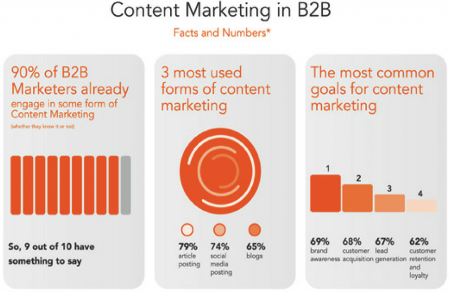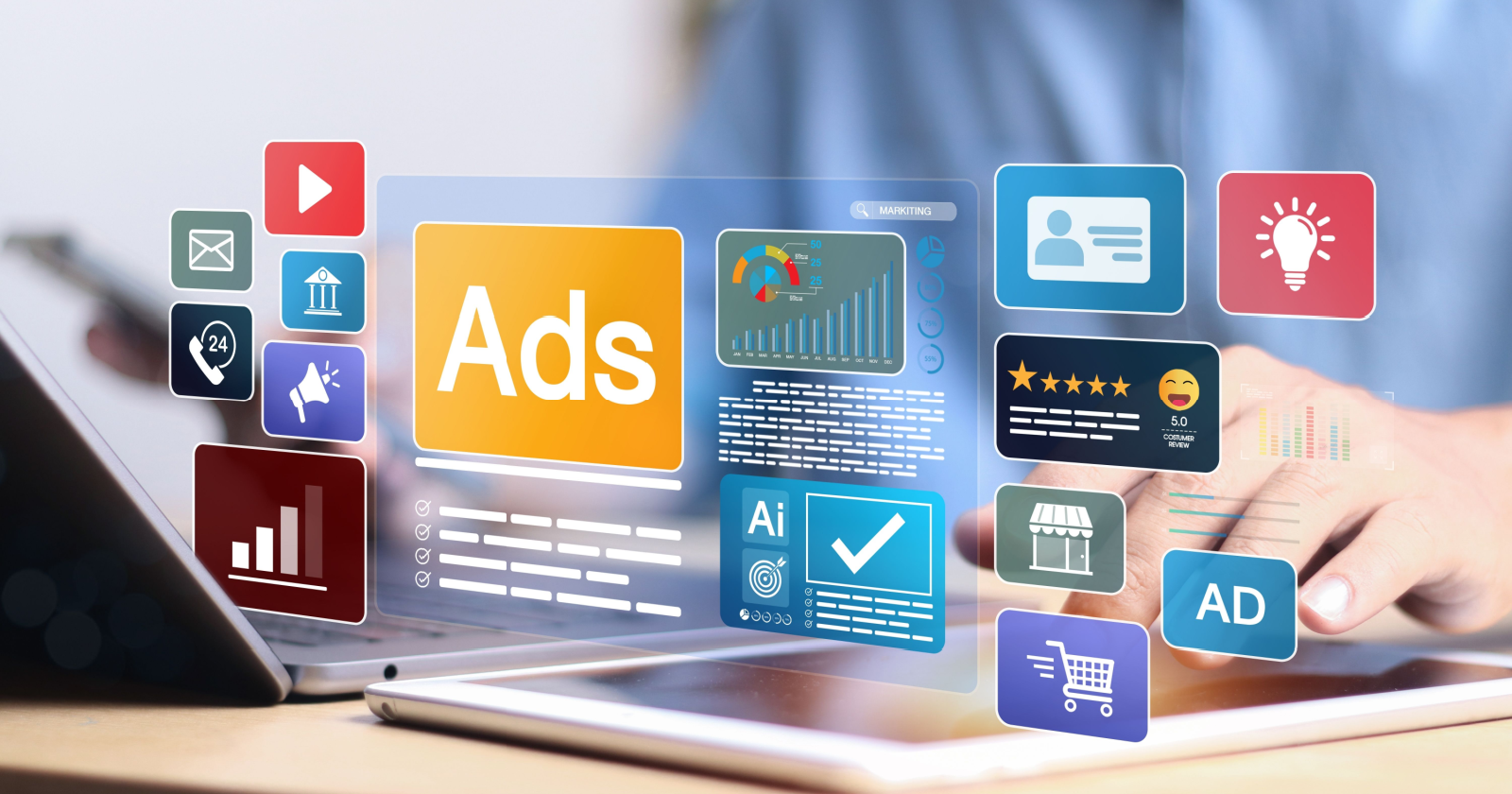What is the Difference Between B2B vs B2C for Paid Social Media?
While the terms B2B (business-to-business) and B2C (business-to-consumer) marketing may sound similar, they differ vastly in practice, especially when it comes to paid social media. Areas like content, objectives, best practices, and which platforms to use can impact the...


While the terms B2B (business-to-business) and B2C (business-to-consumer) marketing may sound similar, they differ vastly in practice, especially when it comes to paid social media.
Areas like content, objectives, best practices, and which platforms to use can impact the most effective strategies in paid social media. This chart outlines a few of the main differences.

These differences are particularly evident in the approaches for paid social media strategies. Before we dig into the different strategies, let’s take a deeper look at the differences between B2B and B2C.
What is B2B Paid Social Media?
B2B buyers are typically large organizations (like enterprise companies, hospitals, or universities) that market their products or services to other businesses. Those businesses typically need agreement from multiple stakeholders before making a purchase, which often extends the sales cycle length.
When conducting B2B marketing, the message should focus on logic and ROI, rather than emotional impact. How can you help their organization achieve its goals? What is important to their organization’s mission?
When creating a B2B paid social marketing strategy, ensure your campaigns and accompanying materials highlight a solid return on investment (ROI) that underlines how your product or service helps them save time, money—or both.
What is B2C Paid Social Media?
Conversely, B2C marketing means you’re marketing directly to a consumer. The focus should be on the benefits of the product—and how that product can benefit the consumer. However, the purchase decision is based much more on emotion than tangible ROI.
Buyers don’t want to put in extra work to understand the value of your product. You must clearly indicate benefits in a concise way that uses an emotional pull.
B2C vs B2B also differs in length of the purchasing process, with consumers making purchases in minutes to days. In contrast, B2B consumers take much longer, with the decision process occasionally extending a year or more.
B2B vs. B2C Marketing on Social Platforms
In addition to the above differences, B2B vs B2C users tend to use different social platforms. This distinction matters for marketers, as it guides where you should focus your time and resources to target these consumers.
If you’re attempting to sell to a consumer on a historically business-heavy platform (like LinkedIn), it is unlikely you’ll have much success.
B2B Social Platform Use
Historically, social media platforms don’t perform all that well for B2Bs. For example, trying to sell an enterprise software solution on Facebook might not get you very far.
Despite this precedent, there is an exception to every rule, and in this case, that exception is LinkedIn.
Since the platform’s start, marketers have been trying to take advantage of LinkedIn’s ability to connect with powerful decision-makers in a professional setting.
Now you can. Credited with 97 percent of a business’ social media leads, LinkedIn is the platform every B2B marketer should be using to reach their audience and drive leads.
This may sound easier said than done, but luckily, there are multiple strategies to turn LinkedIn into your own personal lead-generation machine.
While LinkedIn is inarguably the most favored B2B platform, Twitter and Facebook earn second and third places in the hierarchy.
Twitter may not be your immediate go-to for B2B marketing, but the platform is filled with potential consumers ready to buy. In fact, 53 percent of Twitter users are likely to be the first to purchase new products.
Twitter can help B2B marketers:
build brand awarenessincrease social monitoringassess competitor analyticsCollaboratively, these three benefits help increase your brand’s visibility, but also allow you to dive deep into competitors’ performance, assessing metrics like follower growth, impressions, and mentions to know where your competition stands.
While Facebook use is declining among younger users, many B2B decision-makers regularly use the social networking site. A recent study reported that 74 percent of users use Facebook for professional purposes.
Facebook may help you gain access to new prospects who would never set a virtual foot in LinkedIn.
Want more evidence Facebook is advantageous for the B2B marketer?
With Facebook ads, you can:
target your audience based on detailed preferencesgather prospect informationuse lookalike audiences to target users similar to your best customersretarget users who have already interacted with your brandMoral of the story: if you’re considering nixing Facebook from your B2B marketing strategy, don’t.
B2C Social Platform Use
While savvy marketers flock to LinkedIn, Facebook, and Twitter to reach B2B consumers, marketers targeting B2C consumers must adjust their targeted platforms accordingly. Let’s look at a few of the most common platforms for B2C marketing.
Instagram was once dismissed as too juvenile to waste marketing spend on. Today, however, the platform is a marketer’s dream, offering countless opportunities to reach established and new consumers.
Given the B2C sales cycle’s brevity, Instagram is the perfect pair for business-to-consumer marketing. For marketers looking to get quick returns on visually-appealing products, Instagram is the go-to social platform.
Visuals aside, Instagram is also highly-trafficked by active consumers.
In fact, Instagram’s business portal reports:
60 percent of people say they discover new products via Instagram.200+ million Instagram users visit at least one business profile per day.1/3 of the most-viewed Stories are from businesses.Those statistics should have every marketer sprinting for their phone to start an Instagram campaign.
TikTok
TikTok might not seem like the ideal platform for your B2C marketing campaign, but many brands have found success on the interactive platform.
With the average user spending 52 minutes a day on the app, there are limitless opportunities for marketers to reach their desired audience.
Unlike other social platforms, TikTok offers marketers a variety of unique avenues for advertising, including:
in-feed videosinfluencer packagessponsored AR contentAs the fastest-growing social platform on the market, be sure to take advantage of the massive audience that is just a video away.

B2B vs. B2C: Content for Paid Social Media
After identifying the social platforms best-suited for your paid social campaign, it’s time to settle on what type of content to share. B2B and B2C differ in this area as well, with B2Bs historically performing well with an informational approach, whereas B2Cs find success with a more approachable, fun tone.
B2B Social Marketing Content
As noted above, businesses buy for a clearly-defined reason—which is based on statistics, not emotion. To successfully market to B2Bs, provide content that focuses on ROI. Here are a few types of content that tend to perform well in B2B paid social campaigns.
Informational Content
To demonstrate that ROI, consider building a library of consumable content that informs. A few mediums that traditionally perform well for B2Bs include:
whitepapersinfographicsguideshow-to contentBy showing clear value in these pieces, you can scratch that ROI itch and begin the process of moving your B2B prospects through your marketing funnel.
Answer Industry Questions
Filling in industry content holes not only allows you to position yourself as an undeniable field expert, but you can also build content that satisfies specific long-tail search queries. Targeting these queries drives qualified traffic to your site, ideally earning conversions.

B2C Social Marketing Content
While B2C’s counterpart craves ROI data, B2C consumers are more emotional buyers. To take advantage of this motivator, use content that inspires, delights, or evokes another positive emotion.
Storytelling
Your aim is to delight and engage your B2C buyers. Use narratives to hook and maintain consumer interest. Telling a story (either in a single iteration or across your campaign’s lifespan) can attract consumers, while also humanizing your brand.
Visual Content
Visual content grabs and holds attention much more effectively than text. By incorporating visuals into your campaigns, you’re more likely to elicit an emotional reaction, resulting in a B2C consumer making a purchase or mentally bookmarking your product for future reference.
B2B vs. B2C: Objectives for Paid Social Media Campaigns
Given the differences in content, sales cycle, and preferred platform, it’s no surprise that B2B vs B2C also differ in objectives for paid social campaigns. Understanding the different objectives provides the information you need to design successful social media campaigns.
B2B Objectives
The intent of most B2B marketing campaigns is not simply to make sales. Rather, a B2B marketing campaign will be marked successful if it improves:
brand growthbrand awarenesslead generationindustry-expert statusSince the sales cycle for B2B consumers is so long, factors like brand growth and brand awareness are incredibly valuable, as they allow you to build connections with potential buyers.
B2C Objectives
While B2B marketers find success benchmarks in growth, B2C markets tend to value direct sales and interactive metrics that show content that is interesting to users. Popular goals for B2C social campaigns include:
engagementlikesfollowsgoing viralFor the B2C marketer, these interactions indicate consumers are attracted to the brand’s offering and willing to interact with the organization.
B2B vs. B2C: Best Practices for a Paid Social Strategy
Although a few best practices apply across the aisle when it comes to B2B vs B2C paid social marketing, a few are particularly relevant to each audience.
B2B Best Practices
To start deploying successful B2B campaigns, look to these four practices to guide you in your planning phase.
Utilize Multiple Channels
Multichannel campaigns increase ROI by 24 percent, with a 9.5 percent increase in revenue gained and a 7.5 percent decrease in cost per lead. That’s ROI you can’t easily ignore.
Identify Goals
Goals only work as hard as you do. You need to establish achievable benchmarks for each campaign, allowing you to note successes and adjust failures.
Measure Results
Without measuring results, how will you know if your campaign was a success? By breaking down marketing metrics, you can gain specific insights into performance, identifying strengths, and recalibrating weaknesses.
Provide Quality Content
You’re only as good as your content. If you’re not creating quality pieces that provide your B2B consumers with clear, tangible ROI, then you’re not going to see results.
B2C Best Practices
Looking for a list of B2C best practices that can get your next campaign off the ground? These three tips can help.
Track the Right Engagement Metrics
As marketers, B2C goals rely heavily on engagement, so tracking these metrics should top your list of must-dos.
social platform engagementwebsite trafficROIquality of leadscustomer retentionconversion rateTest Your Ads
Testing your ads on social platforms is a great way to see which ads perform well with your intended audience. This helps limit spend and increase audience engagement. A/B testing is an especially effective way to better understand which ads customers like.
Clearly Identify Your Audience
Without clearly outlining your target audience, you can’t market effectively on social media. By identifying the who and the why you can target the audience most likely to engage with your content or purchase your product.
Conclusion
Whether you’re marketing a B2B or a B2C audience, it is crucial to recognize the differences between the two audiences so you can create a campaign that actually converts.
As you begin to build paid social campaigns, focus on identifying content that works best for your audience and use the platform where your audience is most active.
By giving your consumers what they want, when they want, where they want it, you achieve every marketer’s goal: increased visibility.
What is the biggest difference you’ve found between B2B and B2C audiences?

See How My Agency Can Drive Massive Amounts of Traffic to Your Website
SEO - unlock massive amounts of SEO traffic. See real results. Content Marketing - our team creates epic content that will get shared, get links, and attract traffic. Paid Media - effective paid strategies with clear ROI.
 UsenB
UsenB 































